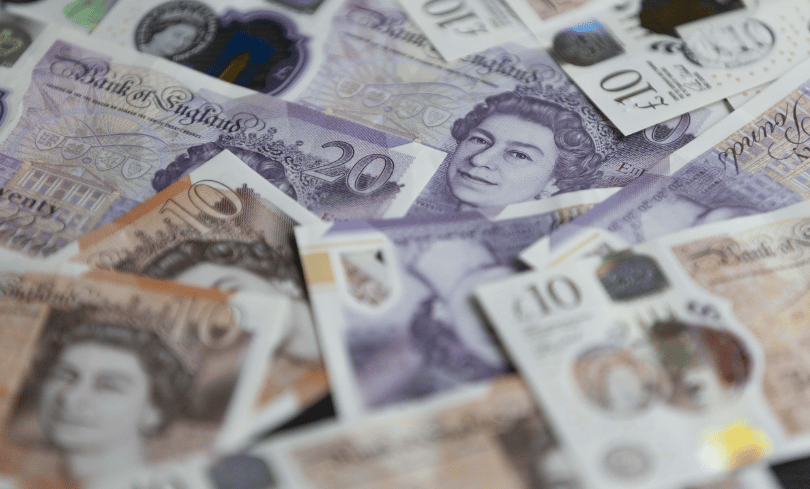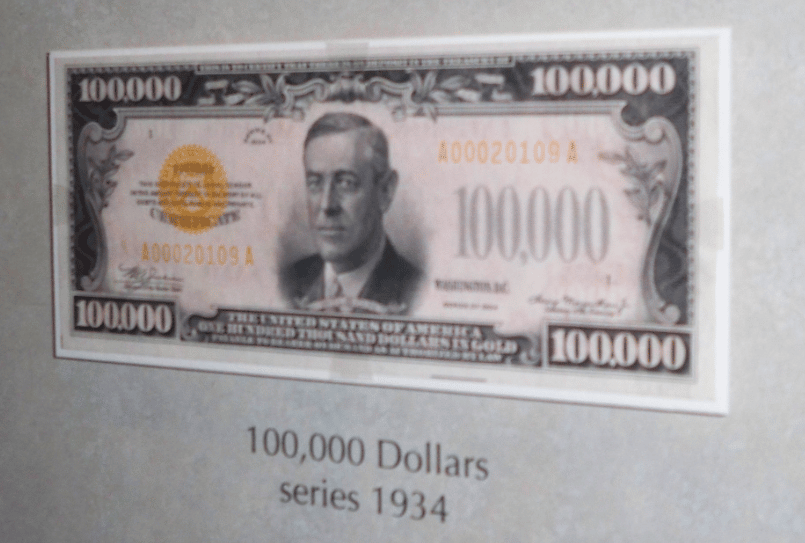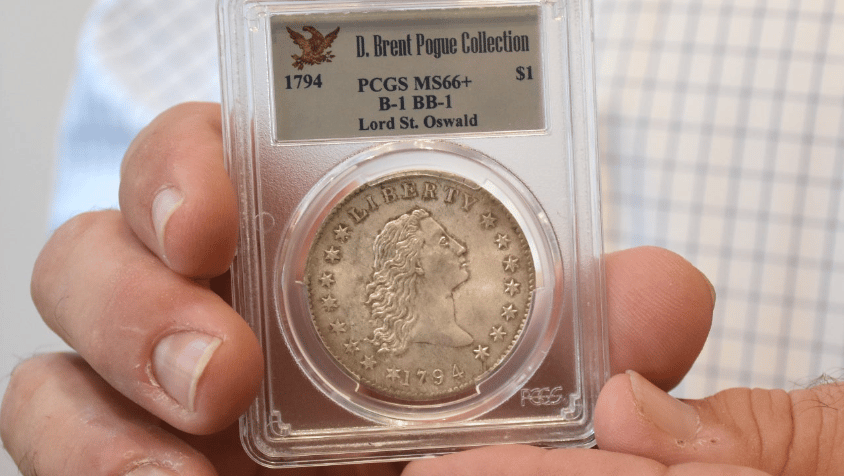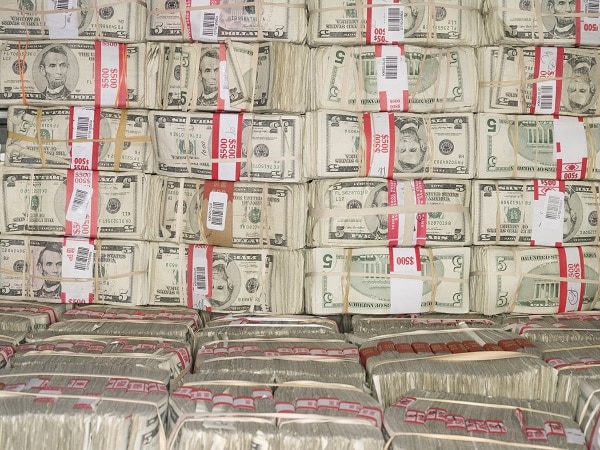Money is a fascinating thing. It has been around for centuries, yet many people still don’t completely understand it. It’s one of those things that everyone needs, but it also has the potential to cause so much destruction. So how did humans get here? And how has money evolved? In this article, you will learn some interesting facts about money and how it has gotten to where it is now. So if you are just curious, or if you’re a history buff, read on.
Contents
- 1 The History Of Money
- 2 Queen Elizabeth II Has Been On More Money Than Anyone Else
- 3 The Largest Bill Ever Made Was Worth $100,000
- 4 The Most Expensive Coin Sold For Over $10 Million
- 5 Paper Money Doesn’t Come From Paper
- 6 Paper Money Has An Average Lifespan Of 4.5 Years
- 7 Did You Know These Facts About Money?
The History Of Money
The first known use of money dates back to around 600 BC in Lydia, an area now part of Turkey. At first, money took the form of coins made from a naturally occurring alloy of gold and silver. These early coins were valuable because they could be used to purchase goods and services and because they were rare and difficult to produce. As trade became more common, different civilizations began experimenting with various forms of money. For example, the Chinese started using paper money around AD 800, while the Aztecs used cocoa beans as currency. By the late Middle Ages, European countries had started using gold and silver coins as their primary form of money. Over time, money has evolved from being a rare commodity used mainly for trade to becoming a ubiquitous part of daily life. Today, people use money to buy everything from food and shelter to clothes and entertainment. Money has also become an essential tool for investment and savings. But despite its ubiquity, money remains a mystery to many people. How does it work? Where does it come from? And why is it so important? The history of money is a long and fascinating story that can help you better understand the role that money plays in today’s world.
Queen Elizabeth II Has Been On More Money Than Anyone Else

Anyone who has ever been to a foreign country and exchanged currency knows that different countries have different faces on their money. For example, in the United States, George Washington appears on the one-dollar bill, while in Britain, you can find a portrait of Queen Elizabeth II on most of their coins. However, many people don’t know that the Queen’s likeness has also appeared in more British currency than any other individual. When she was crowned in 1952, her image began appearing on coinage and postage stamps. And since then, she has appeared on everything from paper money to proofs and collector coins. As a result, over two billion items bear the Queen’s image. That means there’s a good chance that if you’ve ever used British currency, you’ve used a bill or coin with the Queen’s face on it. So next time you’re exchanging currency, take a closer look at the bills and coins; you might be looking at the most common face in currency.
The Largest Bill Ever Made Was Worth $100,000

In 1934, the United States was amid the Great Depression, and the government sought ways to stimulate the economy. One of the methods they came up with was to print a new series of currency, known as the “large size” bills. The largest bill ever printed was the $100,000 bill, which featured a portrait of Woodrow Wilson on the front and an image of the U.S. Treasury Building on the back. The government never released the bill into circulation, and only a few were ever printed. Instead, the U.S. mainly used them for transactions between banks and the Federal Reserve. Today, only four known $100,000 bills exist, and one is on display at the Smithsonian Institution. While it’s unlikely that Americans will ever see a $100,000 bill again, it’s an interesting piece of history.
The Most Expensive Coin Sold For Over $10 Million

The most expensive coin ever sold at a recent auction was a rare silver piece that went for over $10 million. The coin, known as the “Flowing Hair Dollar,” was minted in 1794 and is one of only a handful of surviving examples. What makes this particular coin so valuable is its pristine condition; despite being over 220 years old, it appears to have never been circulated. The coin is also notable for being one of the first coins ever struck by the United States Mint. Given its extraordinary rarity and historical significance, it’s no wonder that the Flowing Hair Dollar fetched such a high price at auction. While most people will never own a coin like this, it’s fascinating to see how much someone is willing to pay for a piece of money in history.
Paper Money Doesn’t Come From Paper

You may not know it, but the paper money in your wallet is not actually from paper. It’s actually a blend of 75% cotton and 25% linen. This special mix of materials is chosen for its durability and resistance to tearing. First, the fabric is dyed with green ink and pressurized to make it smooth. Next, the fabric is cut into large sheets and sent to the U.S. Treasury, where portraits and other designs are engraved into metal plates. The plates print the front and back of the bill, and then the bills are cut into individual notes. So, the next time you reach for a dollar bill, remember that it’s not paper – it’s actually cloth!
Paper Money Has An Average Lifespan Of 4.5 Years

Paper money has a surprisingly short lifespan. The average bill only lasts for about 4.5 years before it needs replacing. There are several reasons for this. First, paper bills are constantly being handled, which causes them to wear down over time. Second, they are also exposed to various environmental factors that can damage them, such as sunlight, moisture, and heat. Finally, paper bills are also susceptible to physical damage, such as tearing and creasing. As a result of all these factors, paper money has a relatively short lifespan. However, in that time, a single bill can change hands thousands of times before it’s taken out of circulation and replaced with a newer version. So the next time you receive a worn-out bill, remember that it has probably had quite the journey before ending up in your wallet.
Did You Know These Facts About Money?
From the largest bill ever printed to the most expensive coin sold, there are plenty of fascinating facts about money. Whether it’s the materials used to make paper bills or the average lifespan of a single note, these bits of trivia offer insight into the history and production of currency. So next time you handle some cash, take a moment to appreciate the interesting history and features of the money in your wallet. After all, money has come a long way throughout human history!


